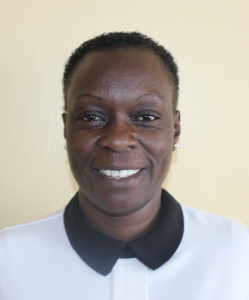October, 2022: Joseph Kwalanda Spring Protection Complete!
Shitirira Community now has access to clean water! We transformed Joseph Kwalanda Spring into a flowing source of naturally filtered water thanks to your donation. Our team also trained the community on improved sanitation and hygiene practices. Together, these components will unlock the opportunity for community members to live better, healthier lives.
Farmer Susan Kwalanda is excited about leaving behind the water-related problems in her community. "We could not access clean water all the time, especially during the dry seasons, because the water point [served] several numbers of people who could come to collect water very early in the morning, leaving the water dirty after collection. Since there was no reliable water point, I was forced to just collect the dirty water and allow it to settle before using it for drinking, and even food preparations for my kids, causing contraction of diseases such as cholera."

Susan at the new spring.
Now, Susan is looking toward the future. "I will be able to start up a brickwork business and then use the bricks in the construction of another house or sell the bricks since the construction rate has increased in my area. Then, also, my tree nursery shall be maintained by daily watering of them and [the] planting of vegetables, thus reducing the expenses used in purchasing the vegetables because I will be having my own."
Children were just as excited as adults about the new waterpoint.
12-year-old Felix K. can't wait to drink safer water. "This will change the quality of water I fetch and carry home simply because a while ago, it was difficult to establish if the water carried home was clean. People used dirty containers to fetch water, hence contaminating the whole pool."

Felix rinsing his water container at the new spring.
The reliable water will allow Felix to take care of his family's livestock more easily. "[I will be] performing multiple tasks within a short time, since [I] am always taking charge of our animals during the weekends by providing them with drinking water. So with the provision of [these] stairs, I can fetch water easily and be sure of [the] quality because there is no immersion of containers in the water, thus making [my] work easier."
Preparing for Spring Protection
Community members worked together to source and carry all locally available construction materials to the spring. These included bricks, sand, stones, and fencing poles. Some people also chiseled away at large rocks to break them down into gravel. Because people have to carry most items by hand, the material-collection process can take anywhere from a few weeks to months.

Little ones doing their part!
When the community was ready, we sent a lorry to deliver the remaining construction materials, including cement, plastic tarps, and hardware. Then, our construction artisan and field officers deployed to the spring to begin work. Individual households provided meals throughout each day to sustain the work team.
From Open Source to Protected Spring: A Step-by-Step Process
First, we cleared and excavated the spring area. Next, we dug a drainage channel below the spring and several runoff diversion channels above and around the spring. These help to divert surface contaminants away.

To ensure community members could still access water throughout the construction process, we also dug temporary channels from the spring's eye around the construction site. This allowed water to flow without disrupting community members' tasks or the construction work. Excavation created space for setting the spring's foundation, made of thick plastic tarp, wire mesh, concrete, and waterproof cement.

After establishing the base, we started brickwork to build the headwall, wing walls, and stairs. Once the walls had grown tall enough, we began one of the most crucial steps: setting the discharge pipe. The discharge pipe needs to be positioned low enough in the headwall so the water level never rises above the spring's eye, yet high enough to allow room for the average jerrycan (a 20-liter container) to sit beneath the pipe without making contact.

If we place the discharge pipe too high above the spring's eye, backpressure could force water to emerge elsewhere. Too low, and community members would not be able to access the water easily. We embedded the pipe using clay (or mortar when clay is in short supply) and placed it at an incline to ensure water flows in the right direction.
In coordination with brickwork, we pitched stones on both sides of the spring's drainage channel. We then cemented and plastered each stone, forming the rub walls. These walls discourage people and animals from standing in that area, which could cause soil erosion and a clogged drainage area.

We then cemented and plastered both sides of the headwall and wing walls. These finishing layers reinforce the brickwork and prevent water in the reservoir from seeping through the walls. In turn, enough pressure builds in the reservoir box to push water out through the discharge pipe.
As the headwall and wing walls cured, we cemented and plastered the stairs and installed four tiles beneath the discharge pipe. The tiles protect the concrete from the falling water's erosive force while beautifying the spring and facilitating easy cleaning of the spring floor.

The final stage of construction is backfilling the reservoir box behind the discharge pipe. We cleared the collection box of any debris that may have fallen during construction. Then we redirected the temporary diversion channels back into the reservoir box, channeling water into this area for the first time. We closed off all of the other exits to start forcing water through the discharge pipe only.
We filled up the reservoir area with the large, clean stones community members had gathered, arranging them in layers like a well-fitting puzzle. We covered the rocks with a thick plastic tarp to minimize potential contamination sources, then piled enough dirt on top to compensate for future settling.

Community members transplanted grass onto the backfilled soil to help prevent erosion. Finally, the collection area was fenced to discourage any person or animal from walking on it. Compaction can lead to disturbances in the backfill layers and potentially compromise water quality.

The entire construction process took about two weeks of work and patience to allow the cement and plaster to finish curing. As soon as the spring was ready, people got the okay from their local field officers to fetch water.

We officially handed over the spring to mark the community's ownership of the water point. Happiness, thanksgiving, and appreciation were the order of the day, flowing in all directions.
Training on Health, Hygiene, and More
Together with the community, we found their preferred date for training while considering other community calendar events, such as the agricultural season and social events. We requested a representative group of community members to attend training and relay the information learned to the rest of their family and friends.
When the day arrived, facilitators Mildred and Patience deployed to the site to lead the event. 13 people attended the training, including six men and seven women. We held the training at a community member's centrally located homestead.

We covered several topics, including community participation in the project, leadership and governance, personal and environmental hygiene, water handling and treatment, spring maintenance, dental hygiene, the ten steps of handwashing, disease prevention, and how to make and use handwashing stations.
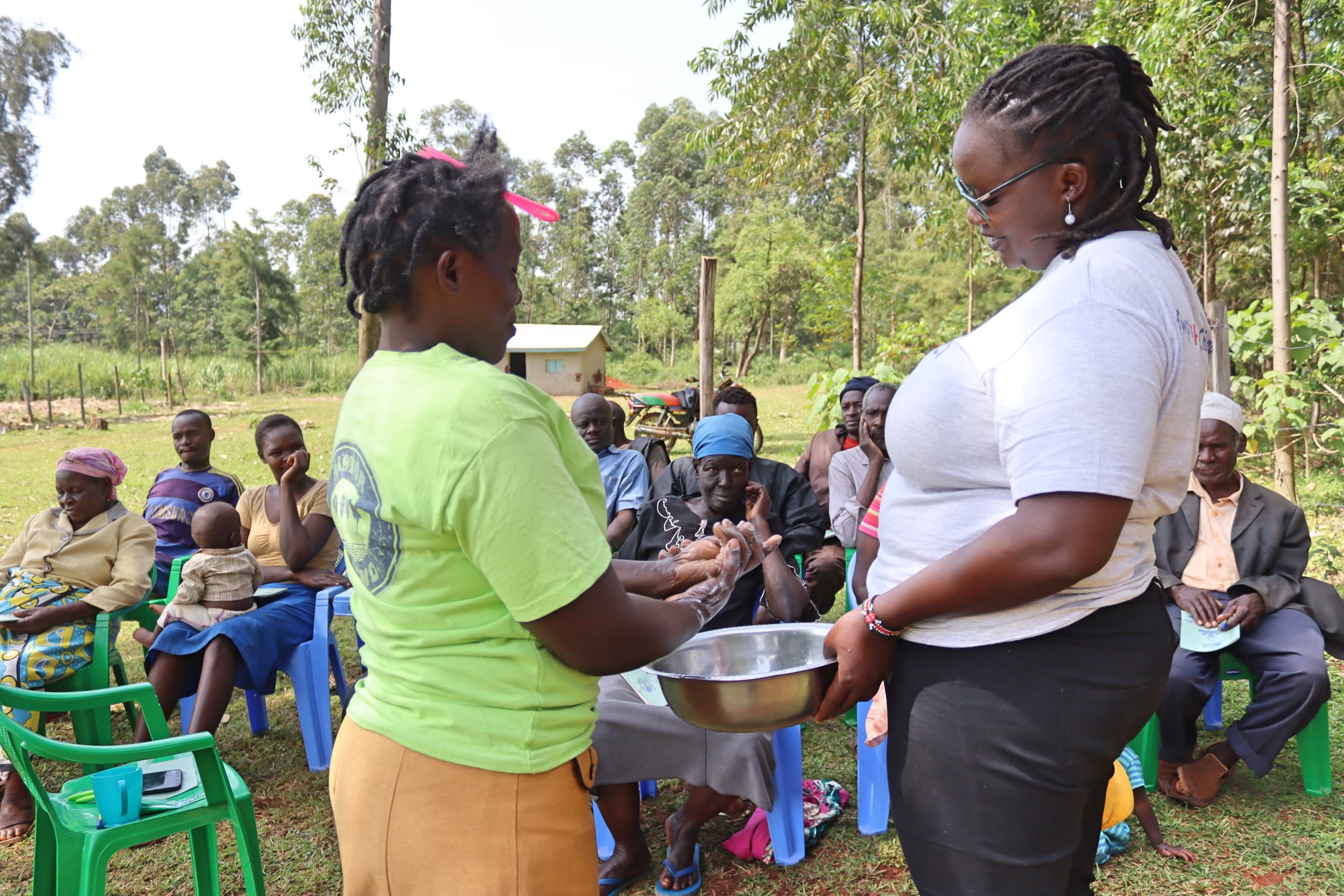
During the leadership and governance session, we held an election for the newly formed water user committee leaders, who will oversee the maintenance of the spring. We also brainstormed income-generating activities. Community members can now start a group savings account for any future minor repairs to the spring and a cooperative lending group, enabling them to develop small businesses.
Community members were most excited to learn about soap-making since inflation has driven prices up so high. This will now be another expense they can cover themselves using local ingredients. Participants eagerly took notes on the ingredients and the steps, even repeating them back to the facilitator at the end of the lesson to ensure they had everything right.

They also enjoyed the session on water handling and storage because they had never known the proper methods of disinfecting and storing water. We gave them a few different options for treatment (chlorination, boiling, and solar disinfection) and reminded them that water should only be stored for a few days at most, and always with a cover. This will help prevent future water-related illnesses.

Laban.
30-year-old farmer Laban Wachiya recounted what he learned during the training. "I can comfortably make soap on my own which I can sell, and then use [the] money in purchasing animal feeds for my cows, and also use the soap in cleaning, thus promoting good hygiene. I acquired the knowledge of the different water treatment methods which I shall apply, hence improving my health since I shall be consuming clean and safe water free from any contamination. Health-wise also, I will be able to take good charge of my teeth by brushing in the required way at the required times and storing my toothbrush well [help in the] reduction of tooth decay or cavities."
Conclusion
This project required a substantial collaboration between our staff, our in-country teams, and the community members themselves. When an issue arises concerning the spring, the water user committee is equipped with the necessary skills to rectify the problem and ensure the water point works appropriately. However, if the issue is beyond their capabilities, they can contact their local field officers to assist them.
Also, we will continue to offer them unmatchable support as a part of our monitoring and maintenance program. We walk with each community, problem-solving together when they face challenges with functionality, seasonality, or water quality. Together, all these components help us strive for enduring access to reliable, clean, and safe water for this community.
With your contribution, one more piece has been added to a large puzzle of water projects. In our target areas, we’re working toward complete coverage of reliable, maintained water sources within a 30-minute round trip for each community, household, school, and health center. With this in mind, search through our upcoming projects to see which community you can help next!
Thank you for making all of this possible!
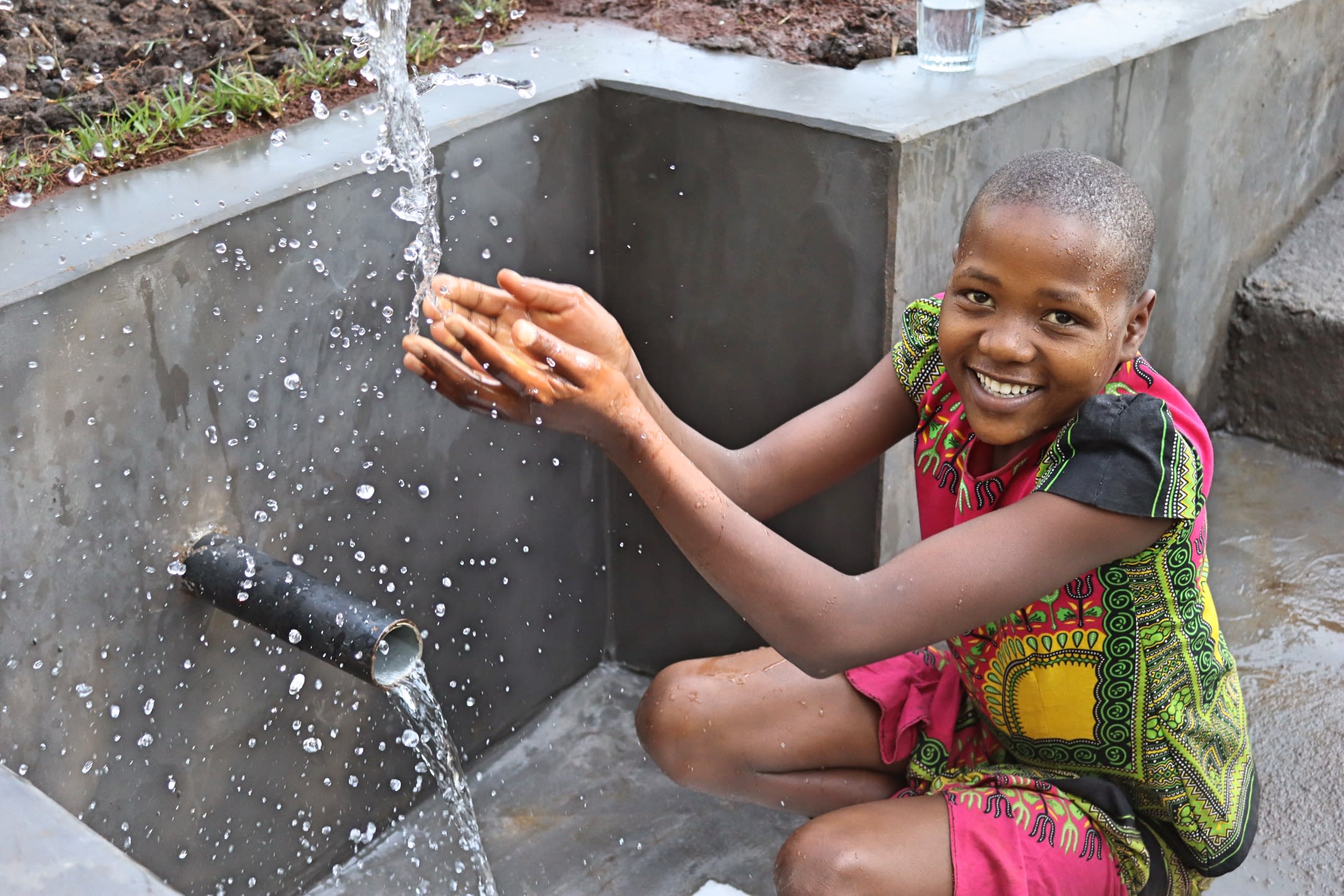
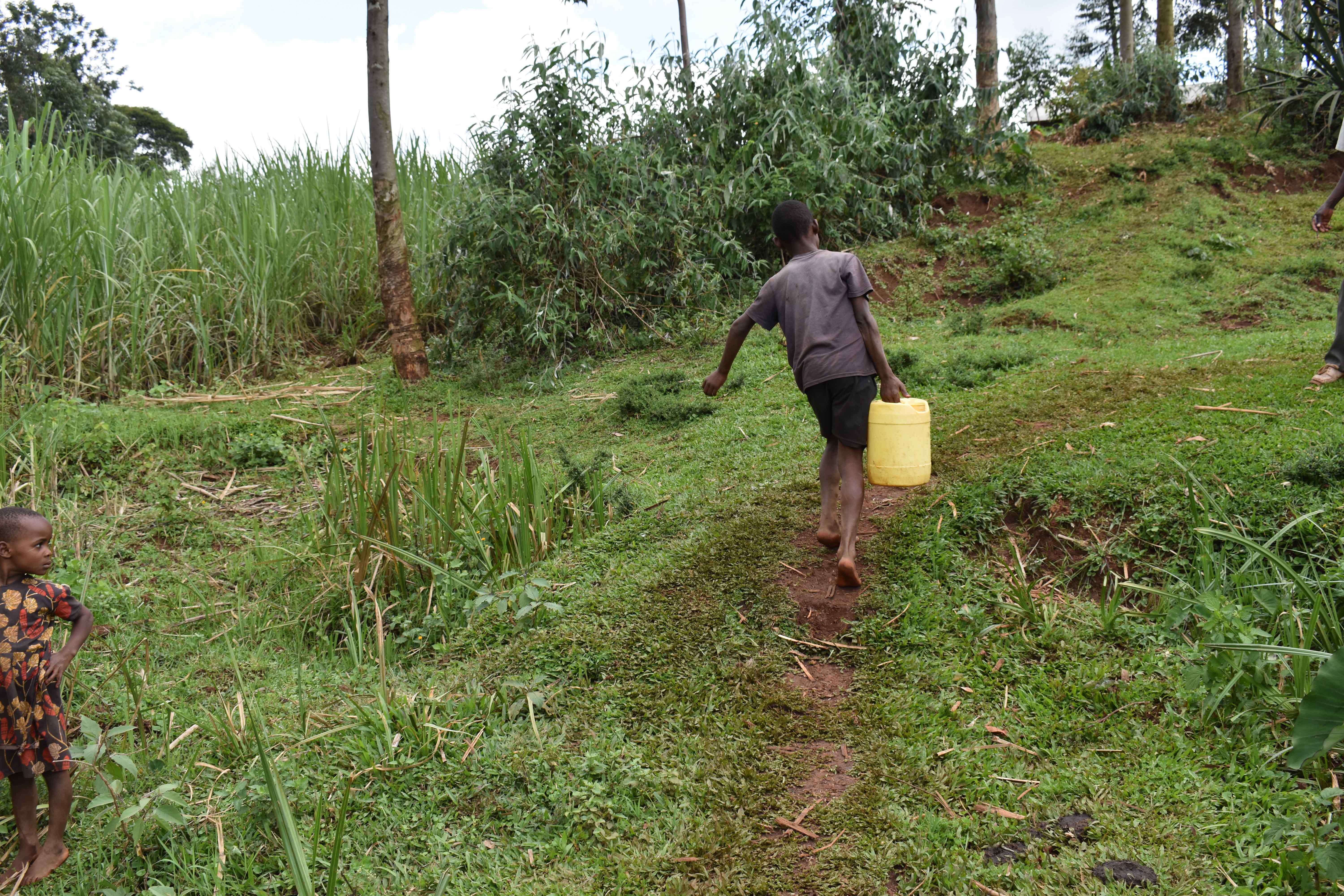
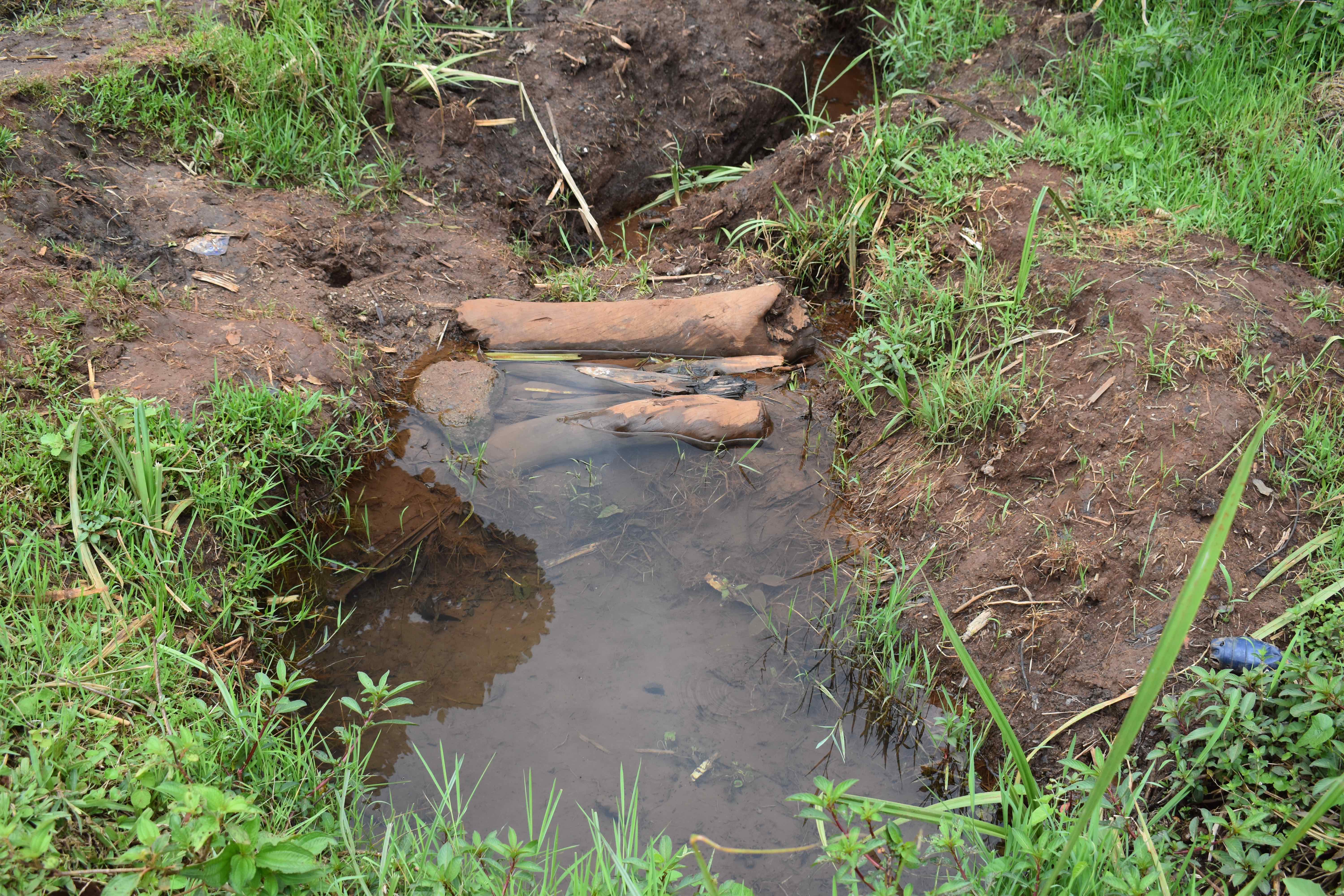
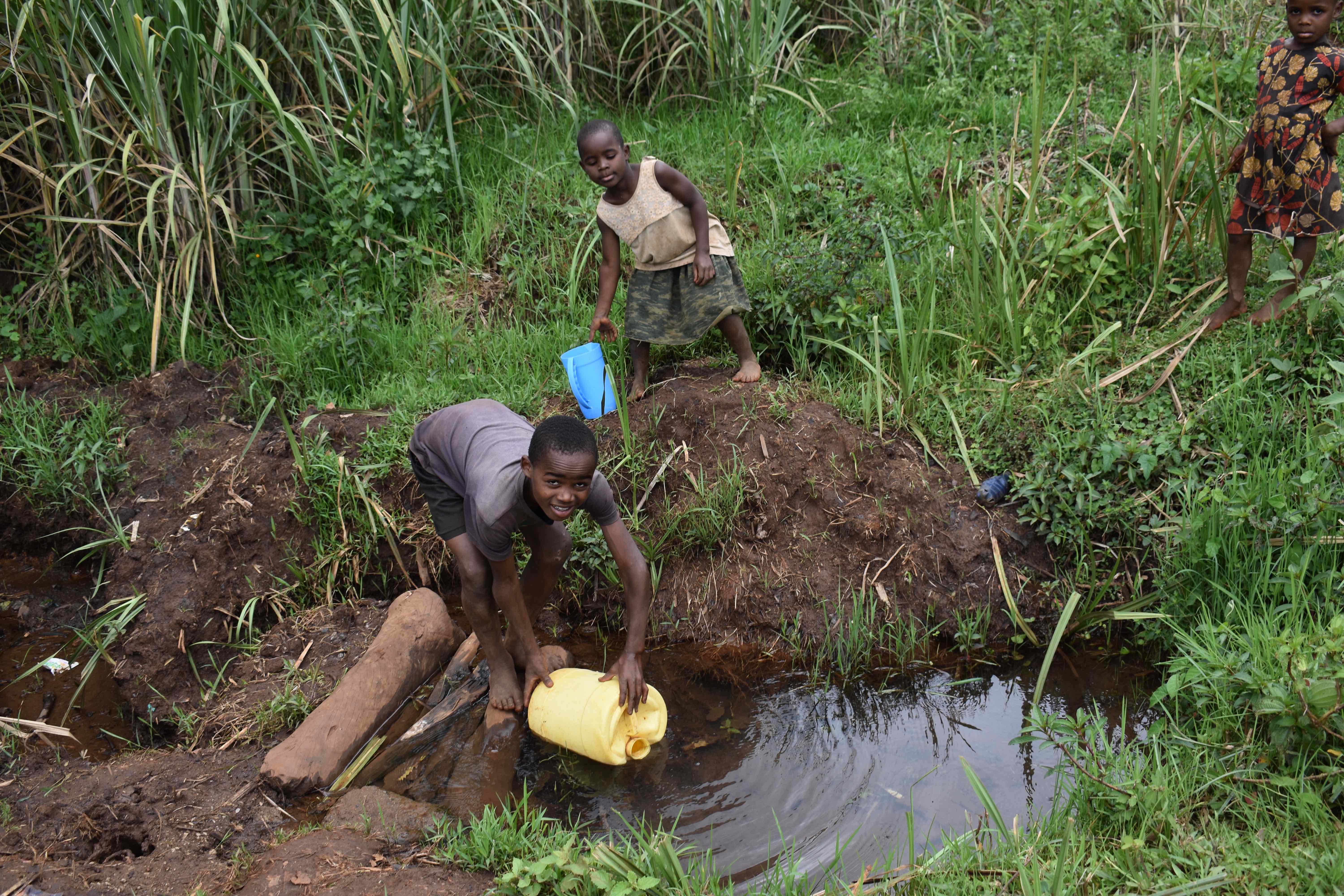

 Protected Spring
Protected Spring
 Rehabilitation Project
Rehabilitation Project










